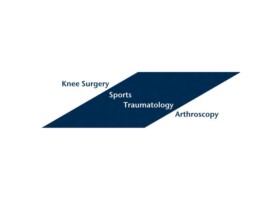
Authors:
Edmund Ganal, Charles P Ho, Katharine J Wilson, Rachel K Surowiec, W Sean Smith, Grant J Dornan, Peter J Millett
Abstract:
Rotator cuff pathology accounts for over 4.5 million physician visits annually. Diagnosis of a rotator cuff tear can often be obtained with a detailed history and physical examination, with imaging commonly used to deter- mine specific clinical pathology. In particular, conventional magnetic resonance imaging (MRI) plays a significant role in differentiating tendinosis from partial and full-thickness tears, determining the quality of the tendon, detecting atrophy and fatty degeneration of the muscle, and identifying associated shoulder pathology.
Currently, MRI is the most effective imaging modality in the evaluation of the rotator cuff; however, its diagnostic sensitivity and specificity remain variable. Diagnosis of rotator cuff pathology through MRI is based on qualitative morphology and signal change and becomes increasingly difficult in the presence of partial rotator cuff tears. Tendinosis is even more challenging to diagnosis because the morphology is not affected and signal intensity alone has proven unreliable in differentiating between normal and degenerative rotator cuff tendons. A more robust method of quantifying the differences between asymptomatic and damaged rotator cuff tendons is needed to improve MRI diagnosis for treatment planning.
Conventional MRI findings provide information on tendon morphology and tear size but do not allow for earlier detection of tendon degeneration and associated histologic biochemical changes. Quantitative information would be clinically valuable to augment subjective interpretation in the diagnosis of rotator cuff pathology, predict progression of rotator cuff disease, formulate a treatment plan particularly for partial rotator cuff tears and minimally retracted full rotator cuff tears, and assess the outcome of treatment. Novel quantitative biochemical MRI techniques, such as T2 mapping, have been increasingly evaluated for their demonstrated sensitivity in detection of earlier biochemical changes (i.e. collagen bril structure, orientation, and water content) in various tissues. When evaluating the tendon, several studies have demonstrated that the bulk T2 values are multi-exponential and that T2 relaxation times may be feasible to monitor the levels of degeneration and the healing process of collagen structures in the tendon non-invasively [30]. These hypotheses have been corroborated in work performed using T2 mapping in the Achilles tendon and in the asymptomatic supraspinatus tendon. Anz described T2 mapping for the evaluation of the supraspinatus tendon in asymptomatic individuals and reported excellent inter- and intra-rater reliability. This study demonstrated that T2 values corresponded to the anatomical structure of the muscle–tendon unit with no significant effect due to the ageing process in asymptomatic individuals. However, the effect of earlier degeneration of the supraspinatus tendon on T2 values remains largely unknown.
Before T2 mapping can be implemented into the routine clinical protocol, it is essential that the T2 values of various stages of rotator cuff pathology are documented. As such, the purpose of this prospective study was to evaluate the clinical use of MRI T2 mapping for arthroscopically verified pathologic supraspinatus tendons. Our hypothesis was that there would be differences in T2 values of supraspinatus tendons with non-tear tendinosis and with partial or minimally (slightly) retracted full-thickness tears, com- pared with asymptomatic supraspinatus tendons. Using the subregions proposed by Anz, it was additionally hypothesized that the analysis would yield high inter- and intra-rater reliability measurements in this pathological cohort. The results of this study will help to con rm variability of T2 values, establish T2 values in various stages of rotator cuff pathology, and evaluate how these values differ from a screened asymptomatic cohort, and help clinicians to better predict at-risk groups and to stratify treatment options.
For the complete study: Quantitative MRI characterization of arthroscopically verified supraspinatus pathology: comparison of tendon tears, tendinosis and asymptomatic supraspinatus tendons with T2 mapping
